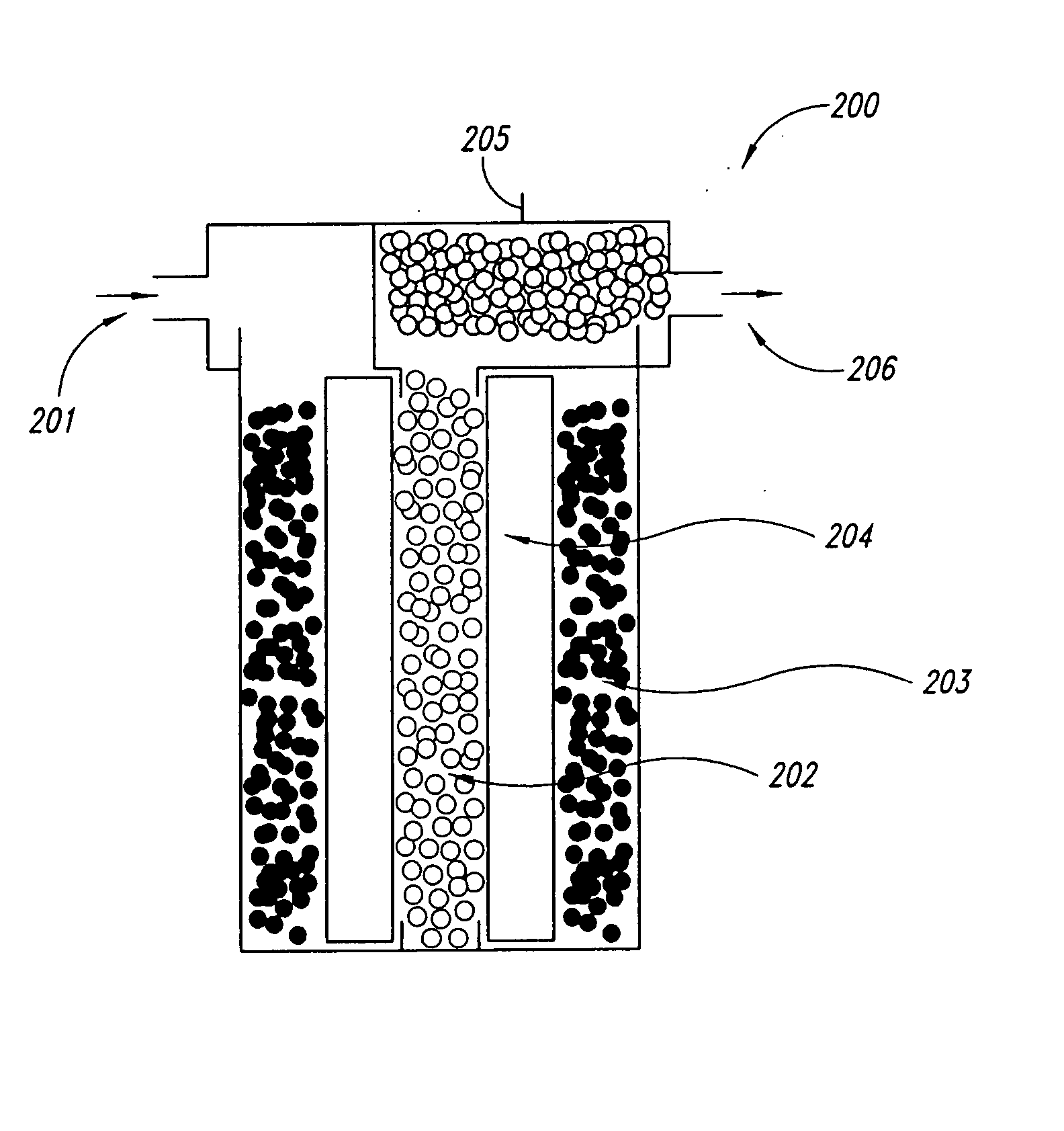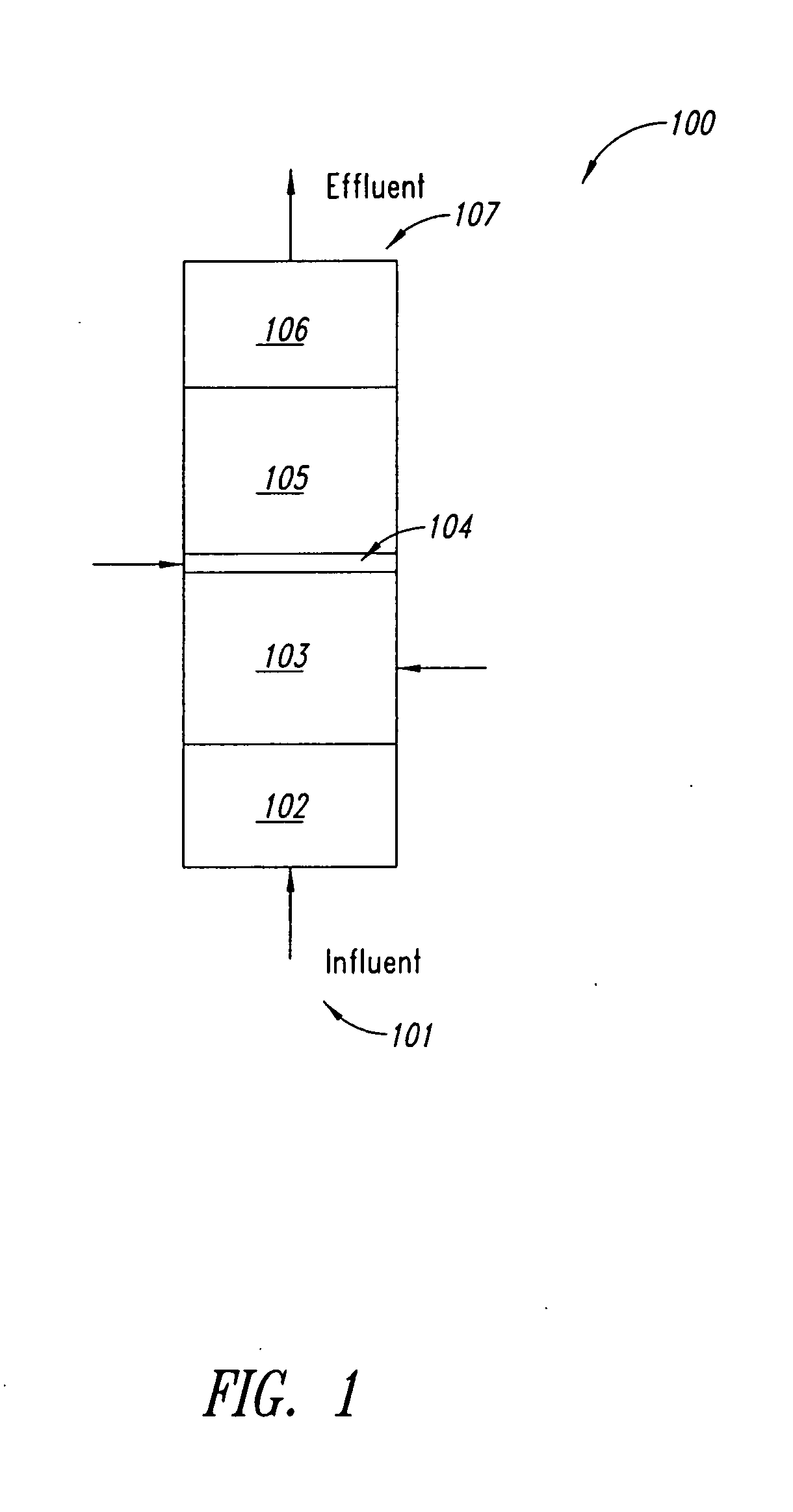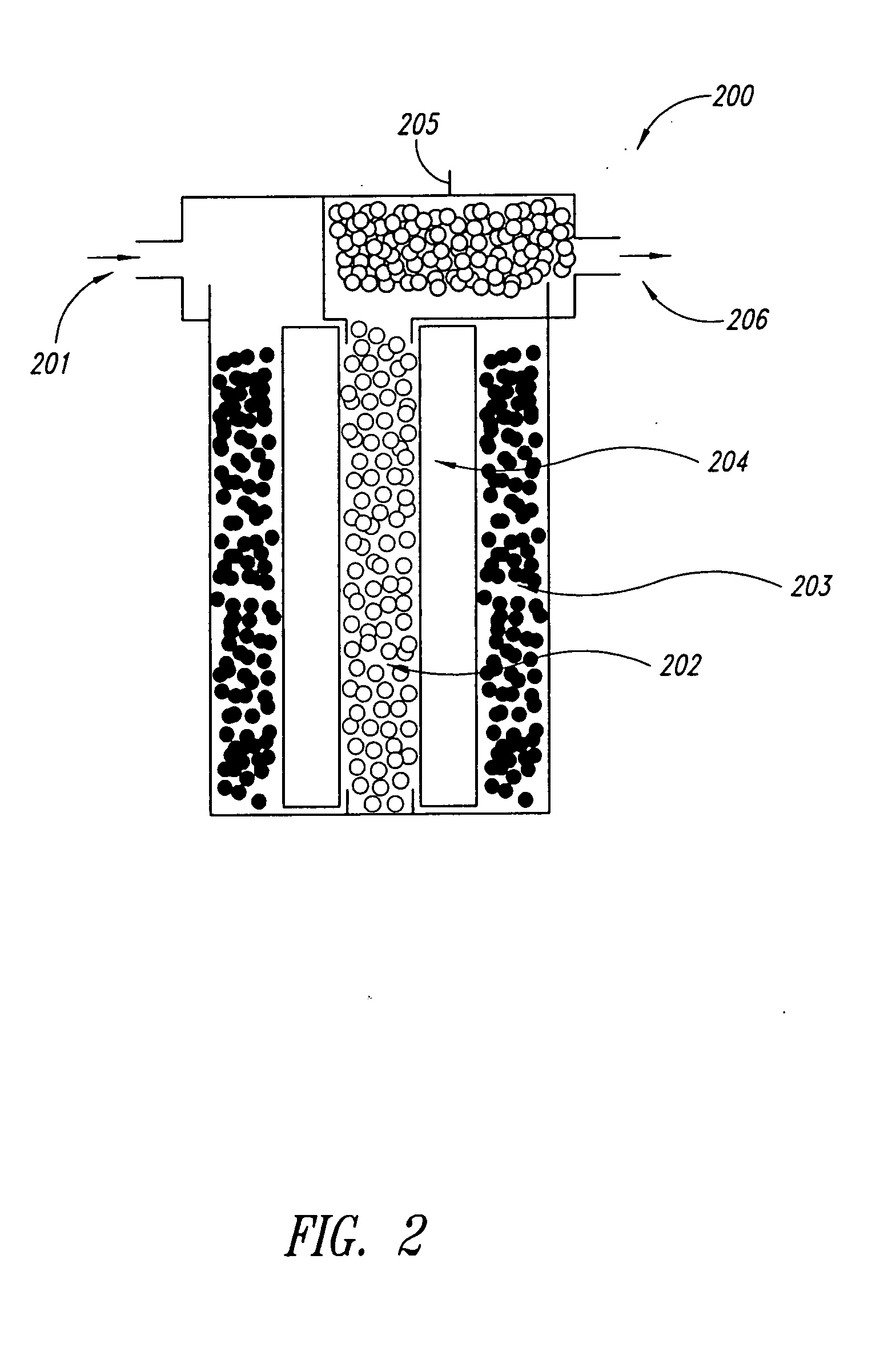Compositions and methods for fluid purification
a technology of fluid purification and composition, applied in the media field, can solve the problems that traditional fluid filters or purification systems may have contaminants stripped or eluted from filters, and achieve the effects of increasing the volume of fluid, reducing the cost of operation, and improving the efficiency of removal
- Summary
- Abstract
- Description
- Claims
- Application Information
AI Technical Summary
Benefits of technology
Problems solved by technology
Method used
Image
Examples
example 1
[0099] A fluid filter system representing one embodiment of the present invention 600 (see FIG. 6) was tested for its ability to remove contaminants from an unpurified fluid. In particular, unpurified water was introduced to the influent opening 601 of the system and contacted with a MCV® iodinated resin column 602 (approximately 5.5 mL) and subsequently passed through a NanoCeram® nano-alumina fiber material 604, and dispensed through the effluent opening 605. Testing for contaminants was conducted following contact with the MCV® column, at site 603, as well as following the NanoCeram® material, at site 605. The flow-through the system was upstream at 20 mL / min. The results of the testing are shown in TABLE 1 and TABLE 2, where no detectable breakthrough of MS2 or E.coli contaminants occurred. SP1 indicates testing at site 603, while SP2 indicates testing at site 605.
TABLE 1MCV + Argonide: E-coli 20 mL / min @pH ˜8.0: t = 21°-25° C.ResultLog10Sample(cfu / 100 mL)Inactivation1st DAYIn...
example 2
[0101] In a separate test conducted with Argonide filter alone, breakthrough of both MS2 and E.coli occurred after approximately 2.75 liters of water passed through the single filter apparatus. Results of the Argonide filter test alone are shown in TABLE 3 and TABLE 4.
TABLE 3Argonide Filter Alone: E. coli 10 mL / min:pH ˜8.0: t = 21°-25° C.ResultLog10Sample(cfu / 100 mL)InactivationInfluent3.00E+06E. coli 4.6 h (2.76 L)484.80
[0102]
TABLE 4Argonide Filter Alone: MS2 10 mL / min: pH ˜8.0: t = 21°-25° C.ResultLog10Sample(pfu / mL)InactivationInfluent3.00E+04MS2 4.6 h (2.76 L)402.88
example 3
[0103] A manifold similar to the one depicted in FIG. 6 was utilized for these tests. However, 20 mL of LR-1 iodinated resin was used instead of 5.5 mL of “classic” MCV.
[0104] Table 5 summarizes microbiological inactivation data as a function of the barrier(s) used (LR-1→low residual iodinated resin; Membrane→NanoCeram® Argonide; LR-1+Membrane→in-series combination of the two barriers).
TABLE 5Klebsiella terrigena Inactivation (pH 7 ± 0.1; t = 20 ± 1° C.)Log10 InactivationSampleLR-1MembraneLR-1 + Membrane 50 mL / min7.156.88>7.15100 mL / min4.945.32>7.15150 mL / min1.954.48>7.15
Influent (cfu / L): 1.40 × 108-1.51 × 108
[0105] Table 6 compares inactivation of MS2 obtained with LR-1 / Membrane combination as well as membrane and LR-1 each by itself as a function of challenge solution flow rates.
TABLE 6MS2 Inactivation (pH 7 ± 0.1; t = 20 ± 1° C.)Log10 InactivationSampleLR-1MembraneLR-1 + Membrane 50 mL / min1.923.55>5.67100 mL / min1.183.053.92150 mL / min0.931.913.07
Influent (pfu / L): 8.95 × 107-1...
PUM
| Property | Measurement | Unit |
|---|---|---|
| Diameter | aaaaa | aaaaa |
| Specific surface area | aaaaa | aaaaa |
| Iodine number | aaaaa | aaaaa |
Abstract
Description
Claims
Application Information
 Login to View More
Login to View More - R&D
- Intellectual Property
- Life Sciences
- Materials
- Tech Scout
- Unparalleled Data Quality
- Higher Quality Content
- 60% Fewer Hallucinations
Browse by: Latest US Patents, China's latest patents, Technical Efficacy Thesaurus, Application Domain, Technology Topic, Popular Technical Reports.
© 2025 PatSnap. All rights reserved.Legal|Privacy policy|Modern Slavery Act Transparency Statement|Sitemap|About US| Contact US: help@patsnap.com



